Other mostly Crabbet horses with pronounced white markings
I am looking up the horses Kate mentioned in the previous entry. Below is Fenwick Orion, another 100% Crabbet of Australian lines. His markings are quite striking. They are so unusual that one is tempted to look for non-Arabian blood (of which there is a little, way back), and attribute his coat color pattern to it.
I think one should instead look for the resurgence of markings that were more familiar in the past, but have been bred out. Arabic books on horses from 1200 years ago mentioned such markings and colors in great detail. While it remains unclear whether their authors were referring to Arab horses only, the sheer number of Arabic terms used to describe these unusual coat color patterns is in itself evidence of the familiary of ancient native speakers of Arabic with such horses with such markings.
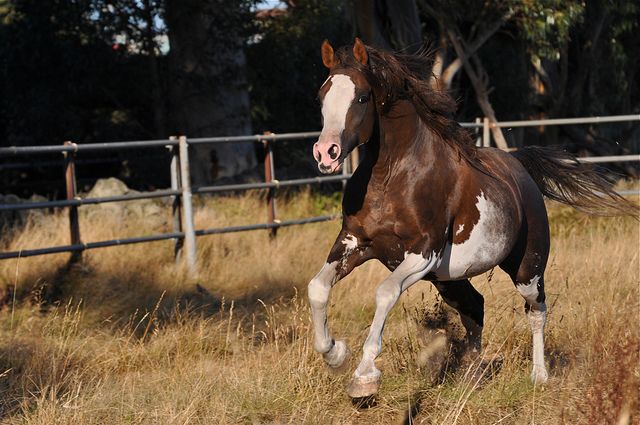
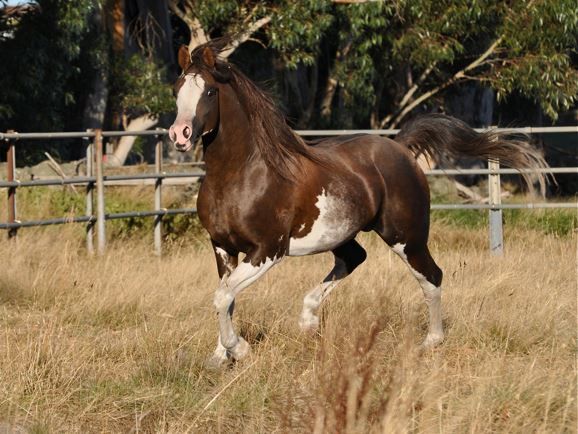
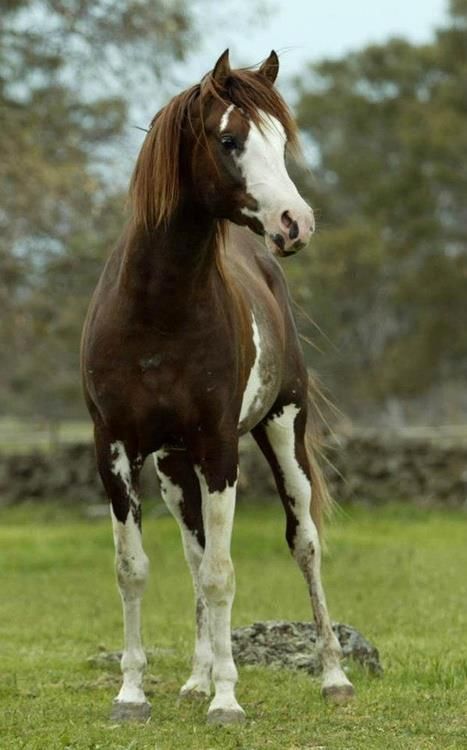
This one is FV Aul Rabba, who is CMK with a majority of Crabbet lines.
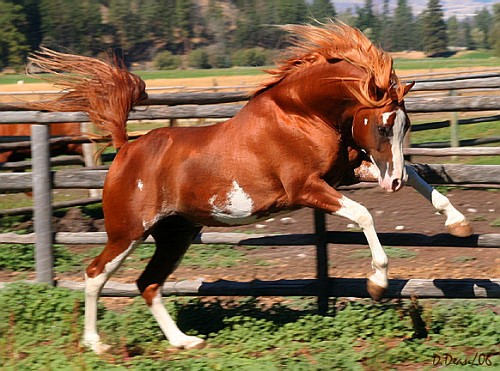
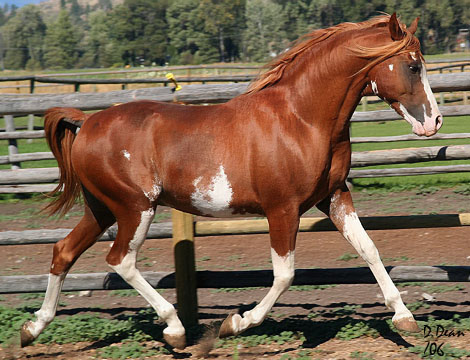
In South Africa, there’s also Olford Sera-Victor and Yentl Picasso, who have striking white markings, though none as loud as these two. Jahan Laheeb, on the other hand, has high stockings, a big blaze and a big belly spot, plus a very old pedigree (Rabiyas, Zahir and Barakah in the fourth generation). And he’s an endurance horse to boot.
I’ve also found a photo of Astrella which makes me suspect a belly spot was painted over, though I’m looking for more photos of her to be certain, and Moira came across a photo of Ferdin with a small white belly spot as well.
The massive belly spots and the markings coming way up the leg to nearly reach the belly are obvious indications of impure blood in my view. These horses all have Skowronek in their pedigrees.
Post photos of white markings of horses without known crosses to partbreds in their pedigree. I think it will be more effective demonstration of your point.
The Davenport stallion Memoir UF (Kuhaylan Haifi + Ralf) had high leg white and a white belly spot. His daughter ADA Recapitulation also has high, irregular leg white.
https://davenporthorses.org/photos/upload/schreilafarm/memoir/rory1003.jpg.php
The deceased core Hadba Enzahiyah Davenport filly, Zalfa, had high leg white on 3 legs and an L shaped belly spot. The authenticity of these horses’ I cannot question.
Both of the above horses appear to be nice movers. Fv Aul Rabba is also tail female Abeya from the Davenport importation, i believe, with some Deyr thrown in too. Both of those horses also appear to have good bone and exemplary hindquarters.. They can move in great elevation without bycycling out behind which we see on so many arabs these days- general list and asil..If we want to prove our point to a sceptical sporthorse world we need to start standing asil stallions that are conformed like these two and that can move just as well, as well as to be able to pass on their attributes.. A better mousetrap
best
Bruce Peek
Carrie- In my view, the pictures shown of Memoir on the link are not in any way “high white” or “irregular.”
How big was the belly spot on Zalfa? Not that I see it as a problem, but I’m curious how big it was.
Me believes, without proof, that the more one linebreeds the Nefisa/Dajania lines (including Nasik and Nureddin) in Crabbets like in Fenwick Orion, the more one has a chance of seeing these pronounced crop up. Perhaps it comes through Hadban, given Rose of Sharon’s extra large blaze in the Rodanias.
In old Crabbets pre-Skowronek, Lyman is correct that the one displaying the most prominent white markings was the gelding Crabbet (Rijm x Narda by Rejeb) photo here:
http://farm1.static.flickr.com/13/89644046_1d18788122.jpg?v=0
https://www.allbreedpedigree.com/crabbet
Re Dejania, Hadban, or Rodania et al, you would have seen these markings manifest themselves in early Crabbet horses if this was the case. Indeed perhaps we did at the level of white markings on Crabbet, Rose of Sharon, Mesaoud et al.
Or, maybe its the ever increasing number of crosses to Skowronek.
Given the over the top white on Fenwick Orion and the numerous others, I think its the latter.
Perhaps we have just stopped selected against extra white. Perhaps even started selecting for it.
Back in the day, horses like these were sold without papers (ex. Abu Farwa’s sister).
The bias against extra white marking remains strong among breeders of Egyptian horses and in the show community, as Lyman was saying. In selecting stallions from the cradle country for their remounts, French missions (almost always led by military staff) certainly had an explicit bias against extra white markings, and against grey horses. That bias even took the form of explicit instructions from supervisors.
Wilfrid and Lady Anne Blunt certainly had that military bias in mind, as they were planning on that being a major market. Lady Wentworth seems to have gone the other way, since she wanted to stand out in the show ring, and the cavalry days were in the rear view mirror (to a large extent). LAB’s Journals seem to indicate that LW was always wanting a grey stallion, from her young days.
I should also say that we bred Prince Hal to Moth (both of whom had considerable, but reasonable white) and got Adorned CF, who had more white, including up to the stifles and a full face blaze.
Correction. Adorned was born a year before we started using CF as a suffix.
I agree with Jeanne about selection. In the past, horses with extensive white markings would not have been bred from.
Abu Farwa’s sister was lovely! Another brindled roan, so probably a chimera?
I try to think of it the following way: what is the incentive of an official from a western government/royal stud, or a merchant acting on its behalf, to buy a horse with pronounced white markings, given a choice of horses in the cradle countries?
Jeanne and Edouard both are correct; the anti-markings prejudice remains strong in some circles, but there are others where not merely has anti-markings prejudice been relaxed, but there is selection _for_ more extensive “pinto” type markings.
I admit to having been wrong, 45 years ago or so, when I disagreed with those who said If this keeps on we’ll have pinto Arabians!
Now we do, and aren’t they fancy things?
Edouard, aren’t there records of buying expeditions which explicitly set limits on acceptable markings? I don’t think I dreamed that.
Jeannie, yes, lovely mare, but probably not a chimera; the problem with that suggestion, as far as I know originally put forth over the stallion Remah (also a handsome devil) is that both horses had two chestnut parents, so there’s no grey gene to be chimeric with. Abu Farwa and Rossletta had another sister, Joanna, who had a good deal of roaning in her coat; the brindle striped effect appears to be one of the limits of the extreme expression of that phenotype.
You are absolutely correct Michael.
At least since the 18th century many European cavalries had strong rules regarding horse colors…which of course were applied too to the buying expeditions (there was no point at buying stallions which would bred unwanted colors).
But one would find historical records of such practice way before (at least since antiquity).
Horses with white patterns such as piebald would have been cut off.
Greys also were forbidden sometimes.
Unless for specific use : piebalds for drummers or white greys for the parade or officers.
Everything that is easily spotted from far away is logically unwanted on a battlefield.
Everything that is fancy is always liked for showing off or for things that have to be spotted easily.
One has to think military application here…
Now with this in mind…I wonder how spotted Arabians would have been considered in their homeland. Since those were also war horses, I guess the same rules would have applied although probably not in the same shades since the environment is different ^^
Some lines of the jazeeri horses imported in mid 20th century produce a lot of color. AAS FAHD ALWALIDA +/ was quite colorful. So was AAS JALAMIYAH (bloody patches) and her son, AAS RPLASH (I think is how we spelled it). He really is a splash of color, high white, broad blaze. No Skowronek in these horses. Lol. To us, it appears to come from more than one line of the imported Sa’ud horses.
Edie, I was thinking that AAS LAZIM SHADEET had some interesting white markings in the face, actually.
i have often wondered at the amount of white that came from the middle east as in the Blunt purchases and the possibility that it was undesirable to those selling- hence they had been presented for sale.sort of like their culling -and that is in no way what i believe as to purity or quality-but maybe reason for the horse merchants of the middle east making these particular horses for sale.
excuse my saying that but when the white markings comes up -this thinking comes to me -i did not mean to be offensive.
all this talk of high white and the expertise of genetics knowledge displayed on these blogs about white markings-Does any one have ideas on if high white has anything to do with blindness at an early age within the high white chestnut Arabian horses..i have heard this for many years -is it true?
I haven’t heard of a link between white markings and blindness in horses myself. I do know that appaloosas are prone to congenital stationary night blindness, with those that are homozygous for Lp (i.e. fewspots and snowcap appaloosas) being at the greatest risk. Silver dapple horses also have eye issues, including cysts, cataracts, and oddly shaped eyes; a mutation in the same gene (PMEL17) is responsible for merle in dogs, and dogs that are homozygous for merle have very odd eyes, or may even been born without eyes at all. Horses with pink skin around their eyes are more prone to sunburn and skin cancer, and I believe cremellos and perlinos have light-sensitive eyes due to their relative lack of pigment. Those are the vision issues that I am aware of which are linked to specific coat colours/patterns, but there may very well be more out there.
Lyman — this photo better shows the large disconnected white patch on Memoir UF’s right knee, which his daughter ADA Recapitulation shares.
That is freaking cool! Thanks for sharing, Ambar!
Wanted to share this since I stumbled upon it; in the same vein of “extreme white” and Crabbet bloodlines, I found a photo of a horse with a blaze that almost looks like he has a splash mutation, and three legs that go almost to the knees/hock.
http://images18.fotki.com/v438/photos/9/9890/17022/RISH-vi.jpg
Nejran (Azrek x Nefisa (Hadban x Dajania)
x
Rabla (Mesaoud x Rosemary (Jeroboam (Pharaoh x Jerboa) x Rodania.)
There is a famous painted Arabian mare in the Ayerza bloodlines: TRABAG (1946)
A descendant from all desert lines except two crosses with Ajman, from Crabbet Park. None of her descendants were painted and a painted Arabian never appeared again in these bloodlines. I don’t know how to attach a photo of Trabag.
Silvia, Trabag was truly anomalous in Arabians, though, interestingly, I’ve seen polo ponies and a Thoroughbred stallion, all from Argentina, with the same manchado markings. It’s a very cool pattern, and very rare; so far, the handful of manchados I have seen have all been from Argentina AND chestnut.
I believe the CMK non-asil stallion Abu Farwa had a full sister who had this “brindled” pattern and consequently did not get registered. Years ago, I saw a 100% Doyle mare at the Maloofs in Colorado who had the same striking coloration. I always forget to write down her name (RJ and Michael would have it), but she was lovely.
Jenny, do you remember if the 100% Doyle mare was a Maloof-bred mare, or from somewhere else? I’m always curious about those high white Doyles.
I believe the Maloofs bred her. I don’t remember her having high white markings, but I was focused on that amazing brindled roan pattern.
Let me do some datasource snooping, if she’s a Maloof mare. Do you remember roughly what decade this was?
It would have been during an Al Khamsa convention held in the Fort Collins area. Sorry, I have a lousy memory for timeframes.
I do know it was the same day as a CU football game, as we had to cut the visit short and speed back to Boulder to make the kickoff! XD
Kate, yes, the “manchado” or “pintado” is a pattern that has appeared in Argentina even among breeds such as the TB and Arabians were it is exceptional.
It makes one wonder about other causes that may be driving these rare occurrences, as it can not be just due to a recessive gene as the frequency is near nil…
I did find odd that Lady Wentworth on her letters to Trabag’s breeder expressed so much interest on Trabag’s coat referring to it as a coat color pattern mentioned in ancient lore. I don’t know what are Lady Wentworth’s sources on that.
I kind of think it may be something related with the land itself. Even among the Criollos, a native breed of South America, with plenty of coat color patterns, some of the wild patterns seen in Argentina are unknown in other countries of South America. Aime Tschiffely on his horse journey from Argentina to US commented on this. He took with him 2 Criollos, Gato y Mancha, that had been wild horses before this journey, and with them made the entire journey. “Mancha” for manchado, spotted.
In my opinion, Lady Wentworth’s source on that is a misreading of the meaning of an Arabic word which her mother translated as “particolored”. I will find the source.
Hernan Ayerza on his first trip to Syria in 1893 wrote explicity on his letters back home that on this journey he was seeing many good horses which he did not select because they did meet his selection criteria of no white markings –what are called down here ‘tapados’, and above 1.50m in height. Finally on dispair of not finding what he was looking, he bought a grey horse and Gailan who had an excelent conformation but was shorter than 1.50m; later back in Argentina Gailan was not much used as a stud.
Typo.Should read ‘ did NOT meet’